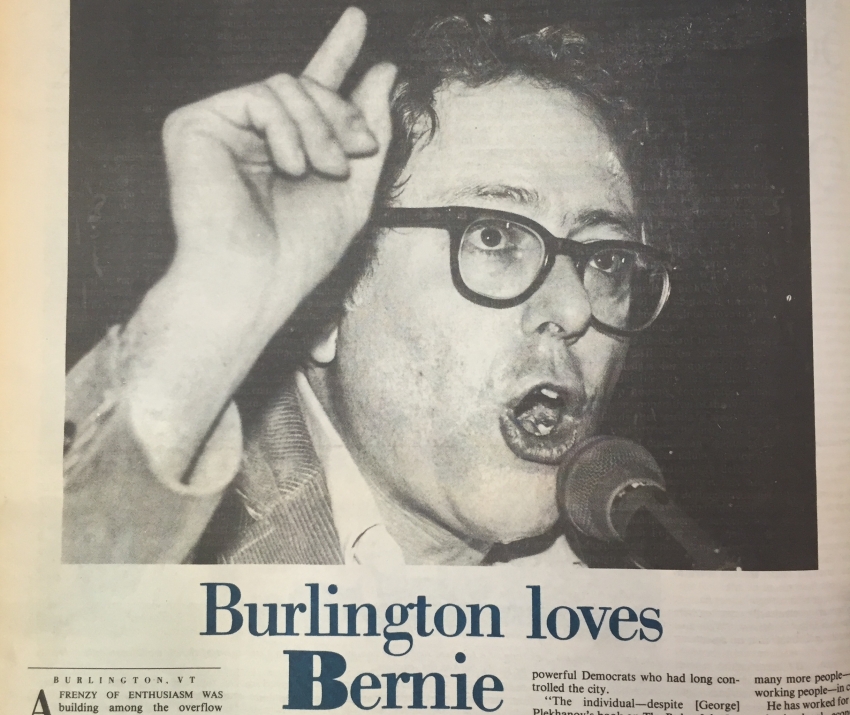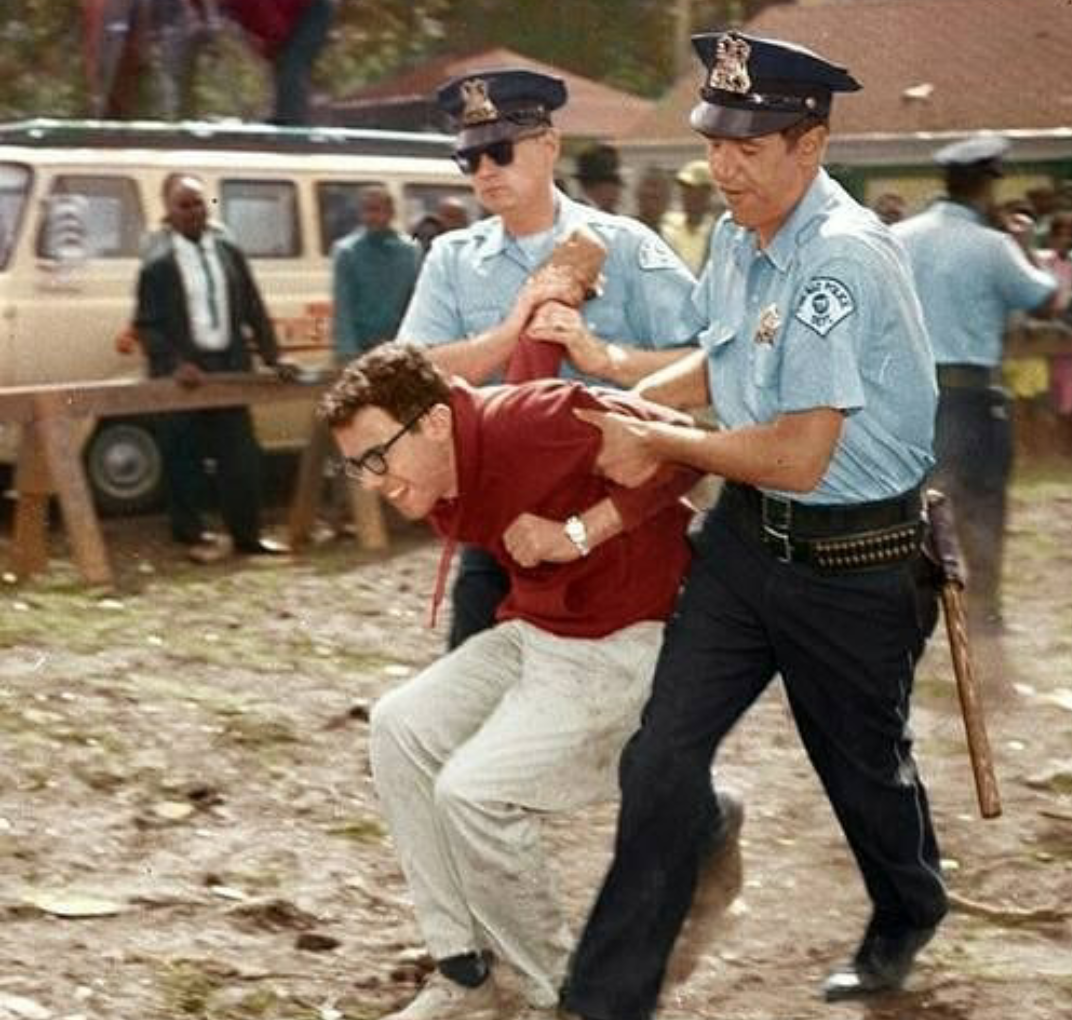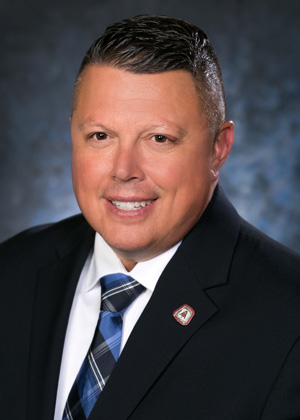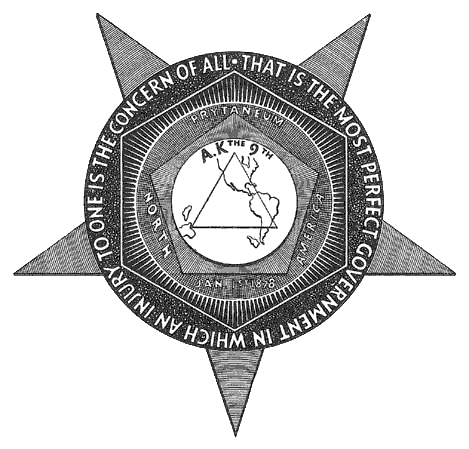Ray's article
In the mid 1970’s Bernie Sanders was the chairman of the Liberty
Union Party, which was a Vermont spinoff group from the Socialist People’s
Party. According to interviews obtained by The Daily Beast and other news
sources, as chairman of this self-described “radical political party” Sanders, repeatedly
compared Vermont white workers to enslaved black people.
In one 1976 conversation, Sanders told a local newspaper that the sale of a privately held mining company by its founders, a company that employed mostly white workers, reminded him of “the days of slavery, when black people were sold to different owners without their consent,” and compared the service economy to chattel slavery.
Reports also show that in a 1977 interview Sanders went on
to compare the state of Vermont’s majority all-white population to black
slaves, due to the fact that the majority of white’s working in the state were
working in the low paying service industry. In the interview Sanders says “Basically,
today, Vermont workers remain slaves in many, many ways,” he went on to say, “The
problem comes when we end up with an entire state of people trained to wait on
other people.”
Lately, Sanders arrogance toward the history of American
chattel slavery, has been very bold, contradictory, and completely absent when
it comes to addressing the plight that black Americans are burdened with as a
result of the atrocity their ancestors endured.
Today, the black American descendants of chattel slavery
account for a disproportionate amount of low-paying service jobs, such as
cashiers, call-center operators, food service workers, security guards, and
temp workers across the states, as compared
to higher status jobs paying a living wage, such as the one’s Sanders fought for in
Vermont.
Other occupations such as customer service reps and front
line sales people are also expected to take heavy job loses as technology is
expected to substitute or completely take over functions that over 25% of black
workers traditionally perform.
As the overall labor force participation rate for black workers, like the rate for all race groups, is projected to decline by the year 2026, no single gender/race group is expected to decline more significantly over the next 8 year than the rate for black men in the U.S. labor force.
Bernie Sanders compelling ignorance of this major issue of unemployment and underemployment plaguing specifically black male descendants of chattel slavery is causing an uneven accord among black voters, who believe that Sanders is playing dumb on the issues, or is just plain out spearheading the demise of black male descendants by completely ignoring their issues.
Sanders who claims to be a champion of fighting income and wealth inequality since before some of his Democratic rivals were born, and regularly brags about being jailed while attending a King rally during the civil rights era, exhibits the thought patterns of what the late Dr. Martin Luther King described as a ‘white moderate.’
Dr. King wrote the following about 'white moderates' in his 1963 letters from a
Birmingham Jail –

One occupation that black men in this land have consistently
worked in since before the founding of America is construction. As black chattel
slaves, not service workers like those in Bernie’s Vermont, black men & women worked as unpaid
free labor, under torturous conditions, and practically built the cornerstones
of the American infrastructure we enjoy today.
Historically, after the abolishment of chattel slavery in America, white American workers quickly organized labor unions, and sieged on the opportunity to corner the labor market for industrialist, by consolidating the work force under their unilateral control for the betterment of the ‘white working man.’
Sanders, a good ole boy representing Vermont, who plays
possum of the subject of reparations, and the ill effect of America’s blood
stained past of chattel slavery, is unequivocally a big time labor union
supporter, and is very imaginative when it comes to ways he can directly help promote
their interest.
For example, Bernie proposes “card check,” the process by
which unions can easily organize a worksite and also supports bailing out
underfunded union pension plans by raising taxes on wealthy Americans.
Sanders proposed ‘Keep Our Pension Promises Act’ which targets
so-called multi-employer pension plans, typically run by construction unions.
Nearly a third of these construction union pension plans are seriously
underfunded and heading toward insolvency, for reasons such as failure of their
unions trustees to invest wisely.
Yet while Bernie expresses his attentiveness and concern for majority white construction labor unions, and as employment in the construction labor market is expected to grow much faster than all other areas of occupation over the next decade, many black workers, particularly the sons of those that built the nation, black male descendants of chattel slavery, are all but denied traditional access to high paying construction union trades.
In exchange for careers as skilled tradesmen, the majority of black men entering the construction trade unions are herded into what Calvin Clinton, the President of the African American Workers Union (AAWU) describes as the ‘Jim Crow Construction Scheme,’ comprised of ‘pre-apprenticeships’ and ‘Title 3’ work force initiatives that far too often leads black workers back to unemployment lines.
The practice of immediately firing or laying off black construction workers once local hiring requirements have been satisfied, or the project has ended, which ever comes first, is commonly referred to in the industry as the 'One & Done' policy. The 'One & Done' policy is responsible for deterring thousand of black construction workers from become professional tradespeople.
VIDEO: Calvin K. Clinton, President of AAWU explains the 'Jim Crow Construction Scheme'
Senator Sanders who has been very imaginative when creating
solutions for his state, labor unions, and immigrant workers, has not yet written nor sponsored any
legislation that would drastically help struggling black descendants of American
slavery, being victimized by the discriminatory practices of the construction
unions he wants to bolster.
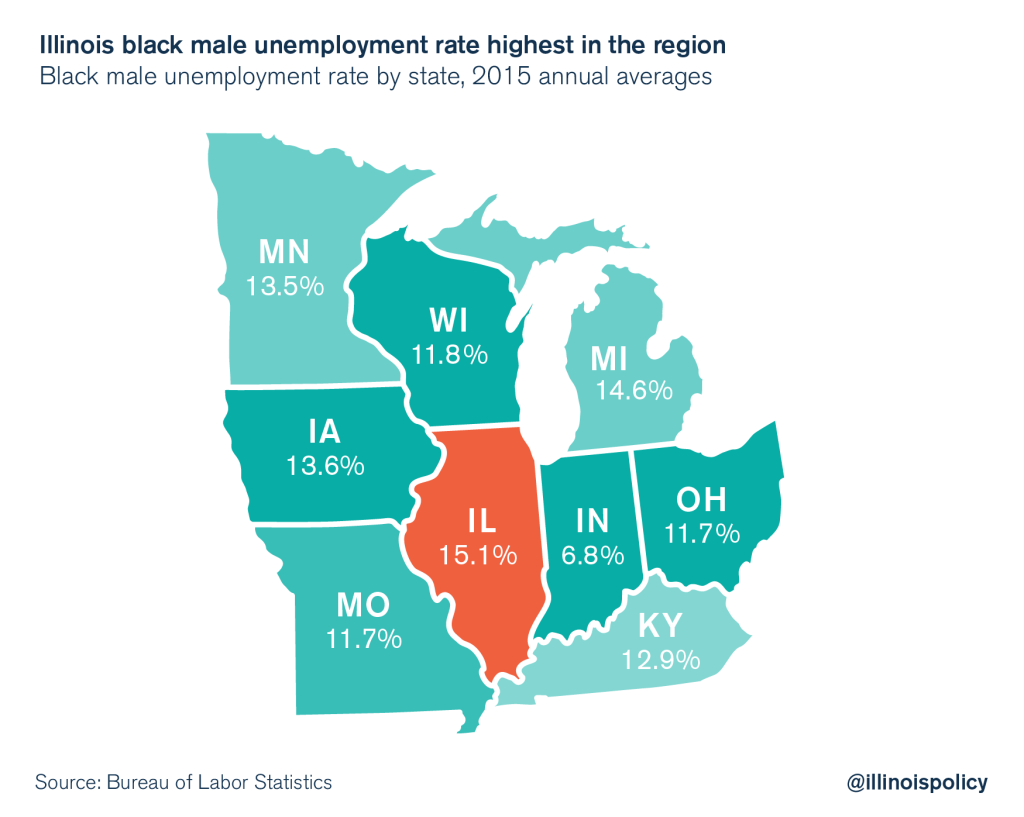
Today, if you take a look at just the mid-western United States, you will see in states all across that region that the black male unemployment rate is at alarming numbers, with Illinois being the worst of the bunch. All across American in other states such as New York, Texas, and California the black male unemployment rate is averaging emergency levels. Even after the stimulus packages of Bush, the quantitative easing of
Obama, and the dramatic posturing of Trump, the overall unemployment number for
black workers as a whole is still double that of white workers in America.
The historic fact that black unemployment has always been
double, or even more than double that of white workers, finds its roots in
government sponsored chattel slavery.
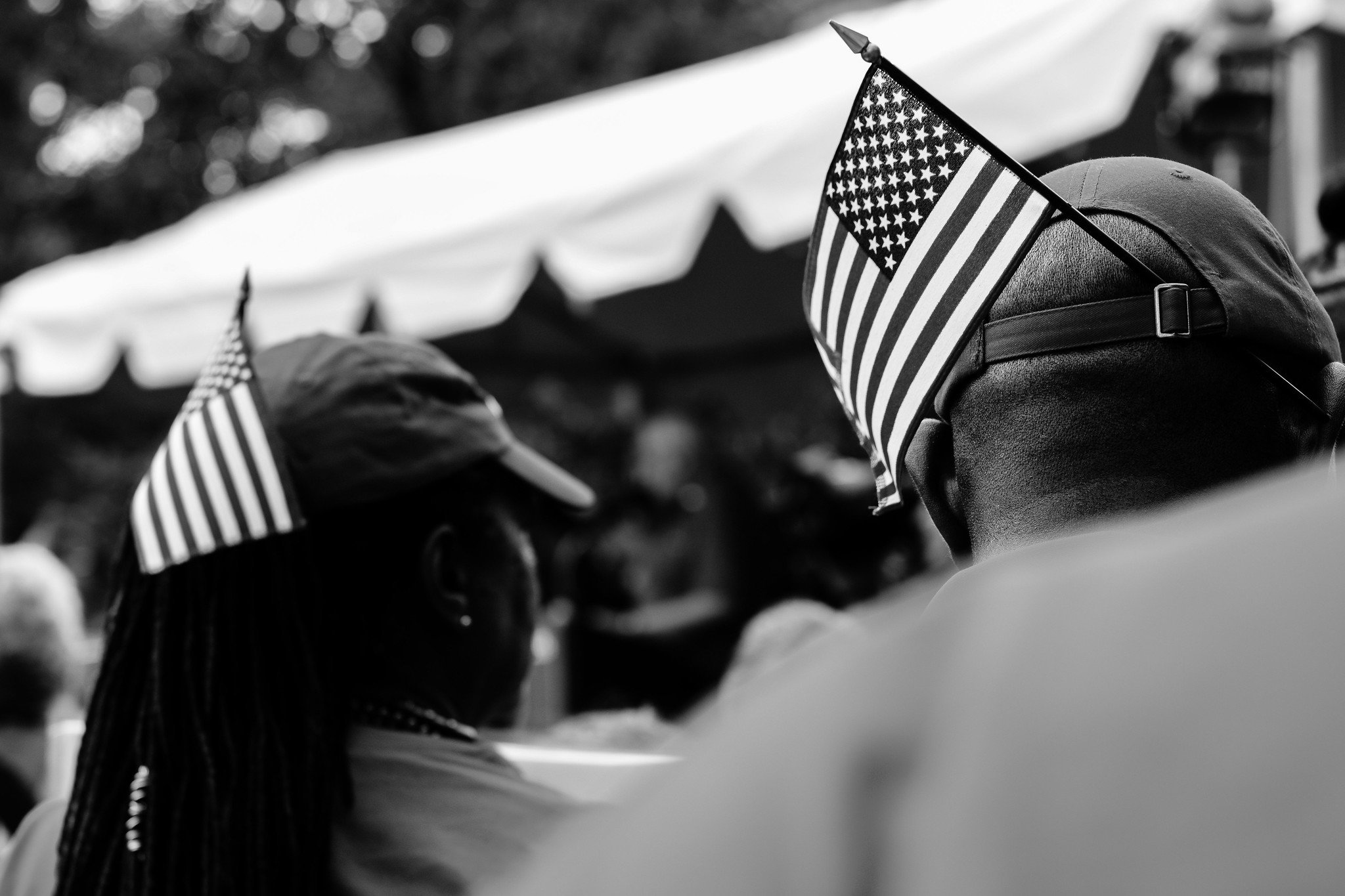
The Carpenters union in Philadelphia is attempting to
distance itself from an official with one of its local chapters who wore
blackface in this year’s Mummers Parade.
Mike Tomaszewski, one of the Froggy Carr Wench Brigade
members who painted their faces black during a Gritty-theme performance, is an
elected delegate for the 4,000-member Local 158, which represents carpenters
who live in the city of Philadelphia. Asked on New Year’s Day why he wore
blackface, Tomaszewski said: “'Cause I like it. Yeah, why not? I know it’s a
shame to be white in Philly right now."
William C. Sproule, executive secretary-treasurer of the
Eastern Atlantic States Regional Council of Carpenters, said in a statement
that the union was “disheartened” to learn Tomaszewski was involved in the
blackface incident.
“Racism is something our union denounces," Sproule
said. "Actions like this counter our union’s mission to be a diverse and
inclusive union that provides opportunity for all workers looking for a career
in construction. While we cannot control the personal views of a member, we do
work to continue to create a culture at all levels that is welcoming to all. We
are looking into this matter further.“
Asked if the union was considering taking action against
Tomaszewski, Sproule added: “The council is reviewing the conduct and the
applicable case law in respect to said conduct.”
Multiple attempts to reach Tomaszewski were unsuccessful.
Even as a majority of Philadelphians identify with racial
minority groups, the building trades unions are overwhelmingly white and have
long dealt with accusations of racial discrimination. It’s a politically
sensitive issue because of the influence wielded by the deep-pocketed trades
unions’ in city elections.
“The fact that he’s in a union — and Philadelphia is a city which has a legacy of racism in its unions — is not shocking,” said Tufuku Zuberi, a University of Pennsylvania sociologist who studies race relations. “This union, which is harboring such behavior, needs to be called in question.”
Building trades union leaders have disavowed the overt
racism of the past and promised to diversify their workforce. Critics say the
progress has been too slow.
The trades unions do not regularly disclose demographic information about their members. A study produced in the Nutter administration found that in 2007, 74% of the trades union workers were white, and 70% lived outside Philadelphia. In 2012, another study found that 76% were white and 67% were suburbanites.
The issue resurfaced recently as City Council members pushed for stronger diversity goals for construction workers who get jobs through the Rebuild program, which uses revenue from Mayor Jim Kenney’s sweetened beverage tax to improve city libraries, parks, and recreation centers.
“I’m not surprised,” Rodney Muhammad, president of the
Philadelphia chapter of the NAACP, said when told Tomaszewski was a Carpenters
official. “I don’t know if his sentiment comes from being a carpenter. It’s
just unfortunate that the trades have had a practice that has been criticized
publicly for decades now in the city of Philadelphia.”
Muhammad said he has been working with leaders of the trades on diversity efforts and is hopeful recent initiatives, such as a Carpenters program to consider formerly incarcerated people for apprenticeships, will produce results.
The history of racial exclusion in the trades unions is
deeply entwined with the era of minstrelsy, the racist 19th century American
form of entertainment that introduced blackface into Philadelphia’s iteration
of the medieval European tradition of mummery.
“In effect, the unions became the gateway for ordinary white
workers to gain access to a fairly good living in the American society,"
said Molefi Kete Asante, chairman of Temple University’s Department of
Africology and African American Studies. "But at the same time, for most
of the history of the unions, it was not the gateway but a closed door to
African American workers.”
Walter Licht, a labor historian at the University of
Pennsylvania, said he was not surprised to learn one of the Mummers who wore
blackface was a union carpenter.
“It doesn’t surprise me, because those legacies have been
there, and they have been, in a place like Philadelphia, hard to break. It’s a
solidarity, and within those solidarities there’s an ethnic component,” he
said. “They’re protective of their union and their community because it’s an
incredible ticket.”
CREDITS - This article is was originally posted at The Inquirer by Sean Collins Walsh, Updated 1/10/2020
ADDITIONAL NOTES>>>
William Sproule is the Executive Secretary in charge of the
Keystone + Mountain + Lakes Regional Council of Carpenters (KMLRCC). Willie
earns $250,000 a year. Willie & the KMLRCC represents more than 40,000
Carpenters in Delaware, District of Columbia, Maryland, New Jersey,
Pennsylvania, Virginia, West Virginia and 10 North Carolina counties. Over 75%
of his Carpenters are white.
Willie helps create and supports Jim Crowe era
'Pre-Apprenticeship Programs' throughout his regions black communities. These
'Pre-Apprenticeship Programs' are designed to block black workers seeking to
enter the Carpenters Union by forcing them to complete unnecessary training's
and so-called 'Construction Boot Camps' before gaining entry to the same
traditional state sponsored Apprenticeship programs as other workers.
Carpenters Union 'Pre-Apprenticeship Programs' effectively create a stone wall that blocks black workers from ever becoming fully vested union members. In Fact, 97% of ALL graduates from a construction 'Pre-Apprenticeship Program' never become Journeyman level tradesmen, and never earn top union pay, nor do they receive retirement benefits. In most cases, black 'Pre-Apprentice' are brokered out to contractors seeking to meet local labor hiring agreements (PLA), these black workers are then paid the lowest industry wages and fired immediately after the projects end - This is called the ONE & DONE Policy.
SHARE THIS ARTICLE - THEN
CALL WILLIAM SPROULE @ (412) 922-6200 TELL HIM TO STOP STONE WALLING BLACK
WORKERS IN DELAWARE, DC, MARYLAND, VIRGINIA, AND N.CAROLINA, END
PRE-APPRENTICESHIPS AND THE ONE & DONE POLICY NOW!!!
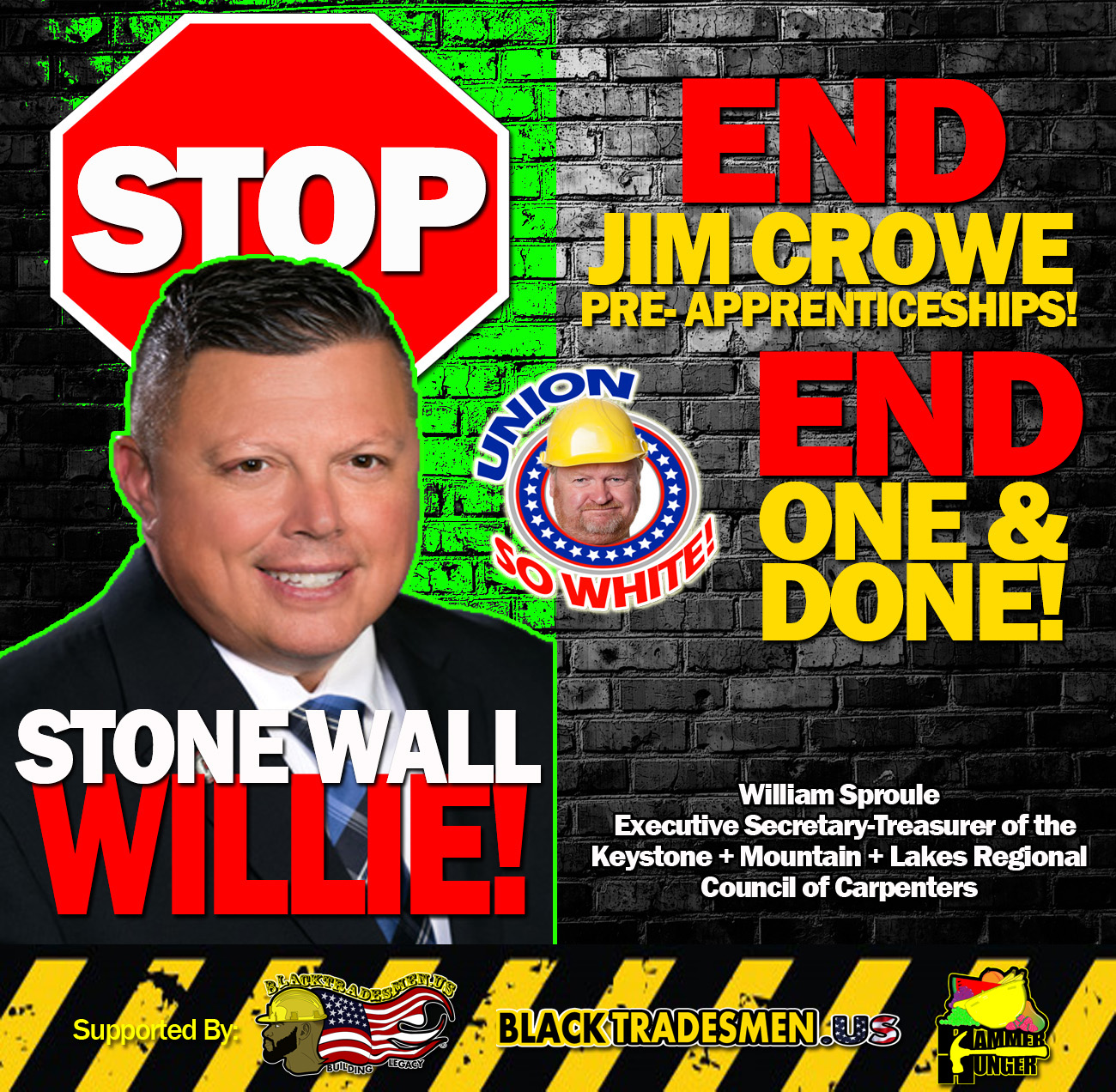
Today, operating mostly as an underground, yet still highly relevant and highly effective organization established to maintain white superiority, the 'Knights of the Ku Klux Klan’ (KKK), who were a spin off from the Freemasons after the American Civil is a terrorist group that still has its poisonous tentacles operating secretively in all areas of American government, law enforcement, education, media, and oh yeah, labor.
The most infamous of these unions was the ‘Noble and Holy
Order of the Knights of Labor’, later renamed ‘The Knights of Labor’ (KOL), which
was the first national industrial union in the United States. Founded in Philadelphia
in 1869 by Freemason Baptist Preacher Uriah Stephens, along with eight others,
‘The Knights of Labor’ was established as a platform on which to build white
working-class unity. While Freemasonry tended to attract members of the
economic elites, especially white merchants, retailers and investors, the
‘Knights of Labor’ membership encompassed all elements of the white working
class.
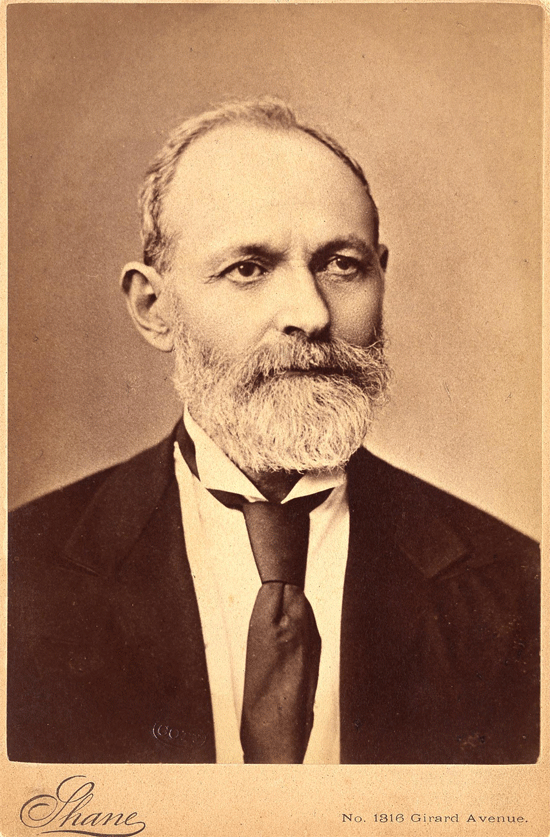
Founded four years after the creation of the ‘Knights of the
Ku Klux Klan’, Stephens also stressed the importance of solidarity within the
ranks of the ‘Knights of Labor’ in order to facilitate white superiority over
black American workers. He felt that the union should be a voluntary group of
white men working cooperatively and fraternally to safe guard white worker’s
interest.
This KOL method of accepting small amounts of black workers,
and separating black workers economically from other black workers performing
the same trades, has proved very fruitful for today’s American labor unions. By
harnessing some black worker support, the KOL was able to appear to the public
as a moderately progressive organization, while spearheading white male
dominance over the entire American workforce.
Black tradesmen that became members of the KOL were only
allowed to meet separately from white KOL members, in segregated union halls, with
white supervision, and had little if any vote on the organizations overall
policies.
Black only KOL union members were relegated to work only in
black communities, and amongst themselves. In fact, the modern construction
industry today in the U.S. finds its historic roots tied to this legacy of
castigating black tradesmen to the same effect when implementing so-called
‘Project Labor Agreements’ (PLA) and ‘Local Hire Programs’ primarily targeting
black workers. The modern PLA is a direct spin-off from the Knights of Labor
racist policies from over 100 year ago.
Racial divisions within the Knights of Labor were primarily
leveraged to prevent unity amongst black working class people and derail collective
bargaining efforts, which would have resulted in true economic gains for the
black working class.
It's been said that white supremacist always play both sides
of an argument in order to draw victory by any means possible for the white
race. While the KKK was the premier ultra-violent right-wing, the KOL was setup
to serve as the quintessential blue collar left-wing of the white supremacists
Masonic orders of Freemasonry. Both organizations used secret rituals borrowed
from Freemasonry when meeting in private.
Take for example the Thibodaux massacre of 1887 , which
killed more than 50 black members of the Knights of Labor, following a
three-week strike during the critical sugar harvest season by an estimated
10,000 workers, mostly black, against sugar cane plantations in Louisiana.
The strike was the first conducted by the Knights of Labor, who strongly
opposed strikes, due to their secret alliances with white elites.
The Opelousas Courier , a black owned newspaper described the scene:
'Six killed and five wounded' is what the daily papers here
say, but from an eye witness to the whole transaction we learn that no less
than thirty-five "...fully thirty negroes have sacrificed their lives in
the riot on Wednesday..." Negroes were killed outright. Lame men and blind
women shot; children and hoary-headed grandsires ruthlessly swept down! The
Negroes offered no resistance; they could not, as the killing was unexpected.
Those of them not killed took to the woods, a majority of them finding refuge
in this city.'
During and even after the Thibodaux massacre the Knights of Labor
did nothing to neither protect nor stop violence perpetuated by their democratic
Klan brothers against their black union members.
Albert Pike, who held the office of Chief Justice of the Ku Klux Klan while he was simultaneously Sovereign Grand Commander of the Scottish Rite, Southern Jurisdiction expressed his concept of Masonic brotherhood’s such as the Knights of Labor allowing black members to join:
"I took my obligation to White men, not to Negroes. When I have to accept Negroes as brothers or leave Masonry, I shall leave it."
Historically, the KOL presented itself as an organization
committed to seeking major political reforms. Their leaders proposed reforms
such as the eight-hour day, the end of child labor, equal pay for equal work,
and a national income tax. But, KOL was completely ineffective at protecting or
even promoting any initiatives or reforms that would directly benefit American black
workers, who at the time were being lynched by the thousands. Black workers could
not vote, attend public schools, travel freely, or benefit from the fruits of
their labor in any meaningful way.
The Knights of Labor felt that they had been ordained by god, and that their effort to unite the white working class was a holy endeavor. Stephens expressed his conviction that the "Everlasting Truth sealed by the Grand Architect of the Universe" (God) is that "everything of value, or merit, is the result of creative Industry."
By promoting the KOL as a holy cause, the union was
successful at galvanizing white workers that feared they were losing power in
the workplace as black workers began to compete for the same jobs. White KOL
members were taught that they were the victims of ‘wage slavery’ and unfair
‘labor monopolies’ that consisted largely of black workers being manipulated by
white elites.
Similar to today’s skilled trade unions, the ‘Knights of Labor’ fraternal symbolism of white superiority was integrated into every activity of its members and provided them with common patterns of behavior, and a code of conduct. Borrowing from their freemasonry origins the KOL created emblems, and badges that evoked behavioral and psychological responses from its members who looked at themselves as militant protectors of the white working man, and related to one another in the same manner in which the symbols derived, as devout white supremacists.
In his doctoral dissertation, "Beyond the Veil: The Culture of the Knights of Labor"(UMass:1990) Robert Weir notes,
“By layering of symbol upon symbol, a psychic universe is created in which all parts relate to and define the whole.....Few fraternal orders created transcendental mental landscapes as well as the masons. This is precisely why the Knights of Labor drew so heavily upon Masonic ritual when articulating its own”.(pg. 18)
And, as the first local Master Workman, the first District Master Workman, and the first Grand Master Workman, the highest position in the organization, Stephen created the Knights of Labor’s emblem, an equilateral triangle within a circle, surrounded by a pentagon, and encompassed by an upside down five point star. Stephens embellished the emblem with symbols from the various white supremacists Freemason lodges to which he belonged.
The KOL felt that they had to have a public agenda and a
private agenda, they strongly opposed labor strikes and boycotts, and they felt it was
important to mask the fact that their unions leaders answered directly to the
same monopolistic elites they were purportedly fighting. By effectively using
symbolism, the KOL was able to rally its white racist base while also clamoring
for support from wealthy white masonic elites.
Although the Sugar Cane strikes of 1887 known as the Thibodaux Massacre, which
killed and wounded more than 300 black KOL members was the first strike the union
had conducted. In its early years, the Knights of Labor strictly opposed the
use of strikes and boycotts against industrialists.
The KOL white member base won important strikes to move the
needle for white workers , such as on the Union Pacific in 1884, and the Wabash
Railroad in 1885.
By the beginning of 1886, the Knights of Labor had over 1
million members across the United States, and Canada, and had chapters also in
Great Britain and Australia. Those successful
strikes during the mid-1880s led to the Knights of Labor's growth. As the
strikes proved successful, more workers flocked to the union movement.
But, due to the Knights of Labor's upper leaderships continued
opposition to strikes, and the leaders allegiance to wealthy masonic elites and
industrialist, the organization experienced declining membership by the late
1880s and the early 1900s.
And as lingering Klan sympathies among its union members became more prevalent, disgruntled KOL members began to establish and join other bigoted white supremacist labor unions, such as the United Brotherhood of Carpenters (UBC), established in 1881, the American Federation of Labor (AFL), established in 1886, the International brotherhood of Electrical workers, established in 1891, Laborers' International Union of North American (LIUNA), established in 1903, and International Brotherhood of Teamsters, also established in 1903, who refer to themselves as the ‘Knights of the Highway.’
As KOL members began migrating to newly founded labor unions
that they felt better served their interest, such as the AFL-CIO that used KKK
style violence, and intimidation against black workers, and as KOL union
membership began to dwindle on paper, the Knights of Labor’s leadership and
their Freemason puppet masters realized that it would be far more beneficial to
realign itself with Klan values as well, as it became a part of what the Klan describes
as the ‘invisible empire.’
Although the Knight of Labor was dissolved in 1949, we can still see the influence that secret societies like Freemasonry still have in today's labor union and labor movements. History tells us that as black workers we must stay alert to its secretive methods, and eliminate union leadership who promise much and deliver little.

